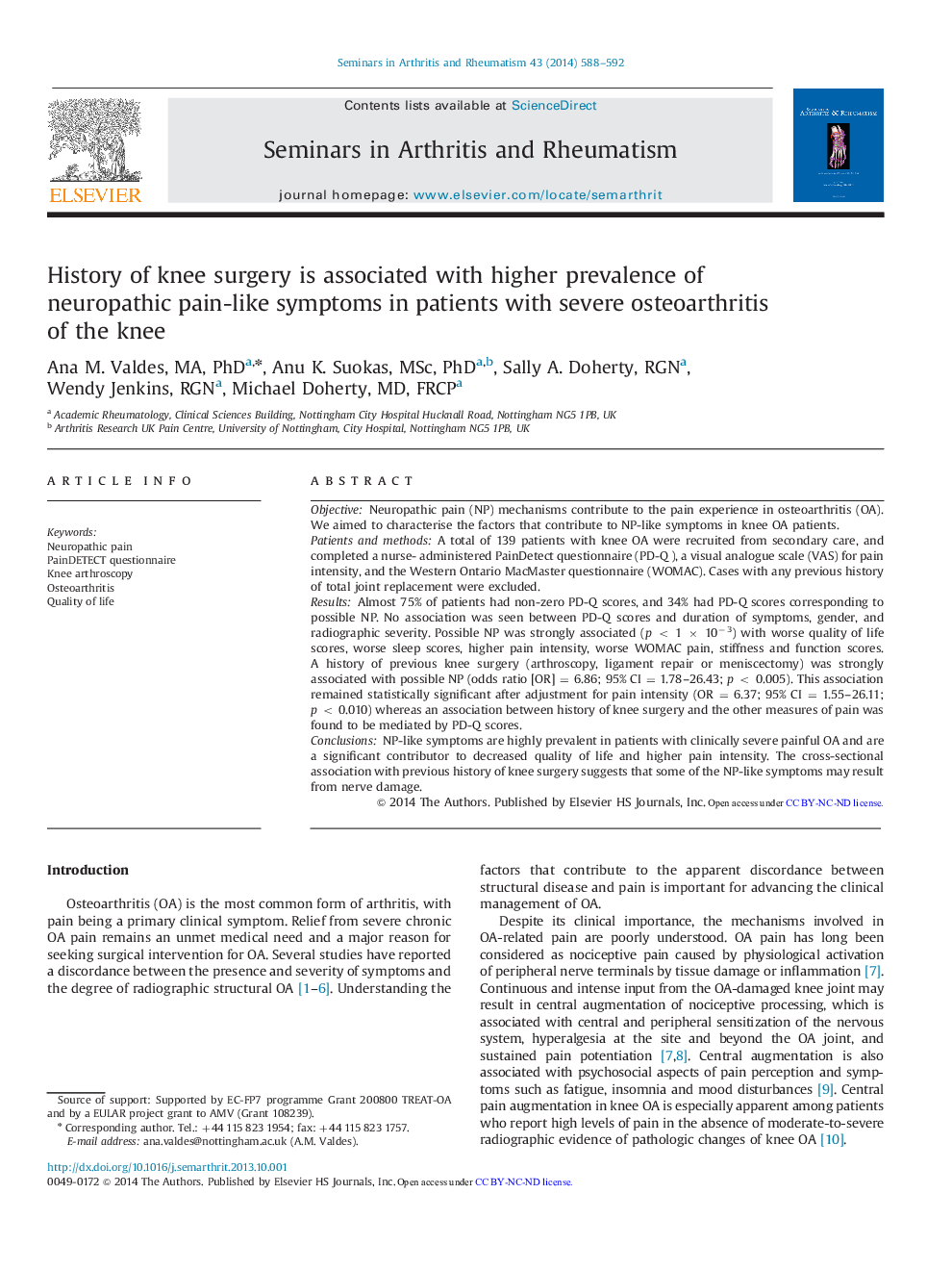| Article ID | Journal | Published Year | Pages | File Type |
|---|---|---|---|---|
| 5887624 | Seminars in Arthritis and Rheumatism | 2014 | 5 Pages |
ObjectiveNeuropathic pain (NP) mechanisms contribute to the pain experience in osteoarthritis (OA). We aimed to characterise the factors that contribute to NP-like symptoms in knee OA patients.Patients and methodsA total of 139 patients with knee OA were recruited from secondary care, and completed a nurse- administered PainDetect questionnaire (PD-Q ), a visual analogue scale (VAS) for pain intensity, and the Western Ontario MacMaster questionnaire (WOMAC). Cases with any previous history of total joint replacement were excluded.ResultsAlmost 75% of patients had non-zero PD-Q scores, and 34% had PD-Q scores corresponding to possible NP. No association was seen between PD-Q scores and duration of symptoms, gender, and radiographic severity. Possible NP was strongly associated (p < 1 Ã 10â3) with worse quality of life scores, worse sleep scores, higher pain intensity, worse WOMAC pain, stiffness and function scores. A history of previous knee surgery (arthroscopy, ligament repair or meniscectomy) was strongly associated with possible NP (odds ratio [OR] = 6.86; 95% CI = 1.78-26.43; p < 0.005). This association remained statistically significant after adjustment for pain intensity (OR = 6.37; 95% CI = 1.55-26.11; p < 0.010) whereas an association between history of knee surgery and the other measures of pain was found to be mediated by PD-Q scores.ConclusionsNP-like symptoms are highly prevalent in patients with clinically severe painful OA and are a significant contributor to decreased quality of life and higher pain intensity. The cross-sectional association with previous history of knee surgery suggests that some of the NP-like symptoms may result from nerve damage.
